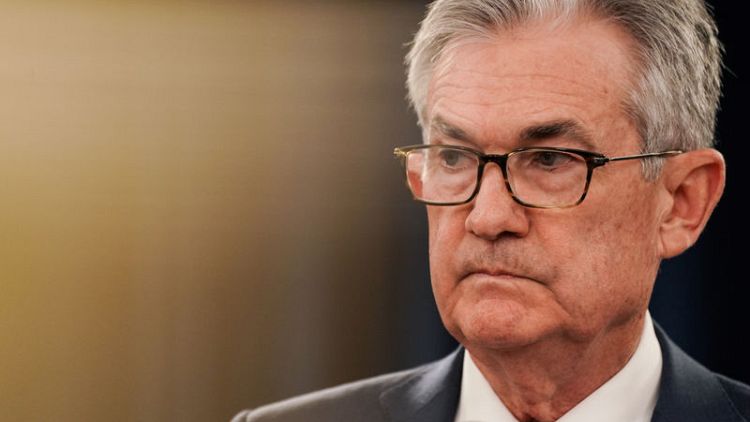By Ann Saphir and Jonnelle Marte
HOUSTON/NEW YORK (Reuters) - Speaking in events across the country, Federal Reserve policymakers hammered home the message that Fed Chair Jerome Powell delivered earlier this week: that after cutting borrowing costs three times this year, the Fed is now done.
After the latest quarter-point decrease Wednesday, which took the Fed's target for the overnight bank-to-bank lending rate to a range of 1.5%-1.75%, the U.S. economy is better armed to withstand the risks of a global slowdown, Fed Vice Chair Richard Clarida said on Friday.
Clarida pointed to positive reports on employment and housing as evidence that the U.S. economy is "resilient" to potential headwinds from a trade war and slower growth abroad.
"We've done the adjustment," Clarida said in an interview on Bloomberg TV. "I would be less optimistic on the economy if we had not made those 75 basis point adjustments."
Speaking in Houston, Dallas Fed President Robert Kaplan said he too felt the rate cuts would support growth, and that what the Fed should do now is be "patient" and see how the economy unfolds.
Indeed, he said, he only supported the most recent rate cut this week "on the condition that it was accompanied with a clear articulation that for the time being the setting of monetary policy was, quote unquote, 'appropriate' (and that) the market and the people should not expect an additional action beyond" the three rate cuts.
U.S. stocks notched new records Friday after a government report showing U.S. employers hired many more people in October than expected.
The jobs data was gathered before the Fed earlier this week reduced borrowing costs a third time since July, moves aimed at shoring up weak business investment and bolstering hiring.
Even Trump's top economic advisor appeared satisfied.
"Monetary policy is in a much better direction now," Larry Kudlow told reporters at the White House. Fed policy had been too tight and had hurt growth, he said in an assessment shared by his boss and reiterated just after the Fed's most recent meeting.
But with the recent rate cuts, Kudlow said Friday, "that huge obstacle to growth is now waning."
It's unclear whether Kudlow's new rosy view of Fed policy is shared by Trump, who tweeted just this week his disappointment in the Fed and Powell.
Not all Fed policymakers have been on board with the rate cuts. Two regional Fed presidents, Boston Fed President Eric Rosengren and Kansas City Fed President Esther George have dissented against all three of the cuts this year.
On Friday, Rosengren said the Fed should put on the brakes.
"With labor markets tight, inflation near target, real GDP growing around estimates of its potential, and a moderation of the risks surrounding trade and Brexit, I believe further accommodation is not needed," he said in a statement.
On the other side, at least one voice within the Fed appeared to remain supportive of Fed easing.
"We’re not at maximum employment." Minneapolis Fed President Neel Kashkari said after the jobs report showed the U.S. unemployment rate had ticked up to 3.6%, still extremely low by historical standards. Noting that inflation is still below the Fed's 2% target, he continued, "Optimal monetary policy should have our employment and price stability mandates in tension. They are not - nor have they been since the crisis....policy has been too tight."
Still, Clarida for his part made it clear he thinks the U.S. expansion still has room to run with rates where they are now, saying the economy is not late in the business cycle and that the consumer has "never been in better shape."
(Reporting by Jonnelle Marte and Ann Saphir; Editing by Mark Heinrich and Andrea Ricci)



